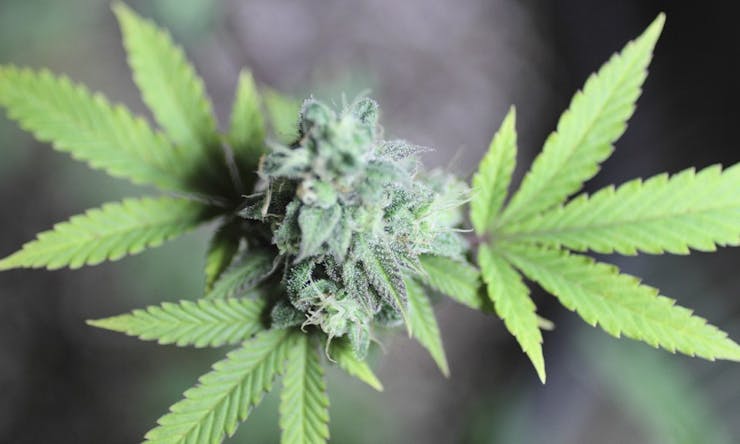The exact origins of the cultivation of cannabis under artificial light are hard to pinpoint. But it’s sure that the United States, especially California, and the Netherlands were the indoor culture’s nurseries in the late 1970s and early ’80s. Breeders like Old Ed Holloway, Dave Watson (aka Sam the Skunkman), Wernard Bruining, Nevil Schoenmakers, Robert C. Clarke and Ben Dronkers as well as a few other pioneers met and worked in Amsterdam to create the basis for the thousands of strains that cannabis patients and recreational users enjoy worldwide today.
Because the main players—except the Australian Schoenmakers—were all either Dutch or American, the first steps to grow potent plants under artificial light developed almost simultaneously in both countries. But the legal part of the business took place in Amsterdam. While in the Netherlands it was still almost legal to grow cannabis on a large scale, even liberal U.S. states had draconian penalties for cultivation at this time. And while in the U.S., the triumph of the indoor culture in California started with the first law legitimizing medical cannabis in 1996, Dutch wholesalers were already exporting equipment and knowledge to neighboring countries in the early ’90s.
But due to differences in laws, electricity prices, suitable climate and some other factors, the European and the U.S. indoor culture developed on separate tracks.
Here are the main differences between U.S. and European growers:
Seeds or clones?
In most EU countries, seeds are legal. Even in countries where there are laws against cannabis seeds, they’re still easily available due to the Schengen Agreement. Professional and 100 percent legal seed banks, most of them by now breeding in Spain, are responsible for the development of new varieties since more than three decades.
In the U.S., most varieties are of illegal origin, selected by private breeders or medical collectives that tend to guard their seeds. In Europe, growers may take advantage of the feminized or even “Auto-Fem” (autoflowering and feminized) strains. In U.S. states where cannabis is legal, most plants are bred from clones and seed banks are rare. Where cannabis is still prohibited, clones and pollen are exchanged on a private basis to produce mini-batches of illegal private seed and/or select new strains.
This kind of “guerrilla breeding” culture is rare among European growers. In the EU, many growers work from feminized seeds, which saves them the trouble of maintaining a vegetative chamber. Only large producers or ambitious amateur gardeners grow mother plants from regular seeds to populate their grow rooms with cuttings. A large part of the final product in Europe comes from feminized seeds.
Lighting
In North America, energy is cheaper than in Europe. Cars have larger engines and cannabis growers use larger lamps. While cannabis is mostly grown under 400 or 600 watts in Europe, 1,000 watt-bulbs are the first choice in North America. LED technology is on the rise on both sides of the pond.
Tents
Although white reflects better than silver, American growers use growboxes with a silver inner layer almost exclusively. In Europe, white boxes are common. The reason: the first white replicas of the German original, which appeared on the U.S. market in 2007, were coated with PVC instead of food-safe and heat-resistant PE (polyethylene). The softener in the PVC led to plants dying inside these tents in some cases—and, consequently, a bad reputation for white-coated growboxes on the U.S. market. According to Jorge Cervantes’ “growers bible,”’ first published back in 1998, white reflects the light inside the tent a lot better than silver. Recent new measurements in the Czech Republic have confirmed this.
Shop highly rated dispensaries near you
Showing you dispensaries nearUnits
For hoses, fittings and pots, different measuring units are used in North America and Europe. Also, all electronic devices in Europe run on 230 volts, instead of the 120 volts used in the U.S. The electrical conductivity is not specified in PPM (parts per million) in Europe, but in mS /cm, or micro Siemens per square centimeter.
Harvesting
In the U.S. and Canada, trimming machines do not have a good reputation among patients and consumers. Even large-scale producers have their buds trimmed by hand. Many growers in Europe even trim their mini-grow setups with harvesting equipment, and large harvests are almost always trimmed with the aid of machines.
When it comes to processing the crop and trichomes, the U.S. and Canada are years ahead of Europe. In Europe, the first silicone mats and accessories for extraction just appeared in the shops and many people still use denatured lighter gas and cheap plastic tubes to make extracts, while a manifold dabbing culture has developed overseas.
Despite these minor differences, European and North American indoor experts have quite a lot in common. In the end, they’re dealing with the same plant and similar problems on both sides of the Atlantic.










